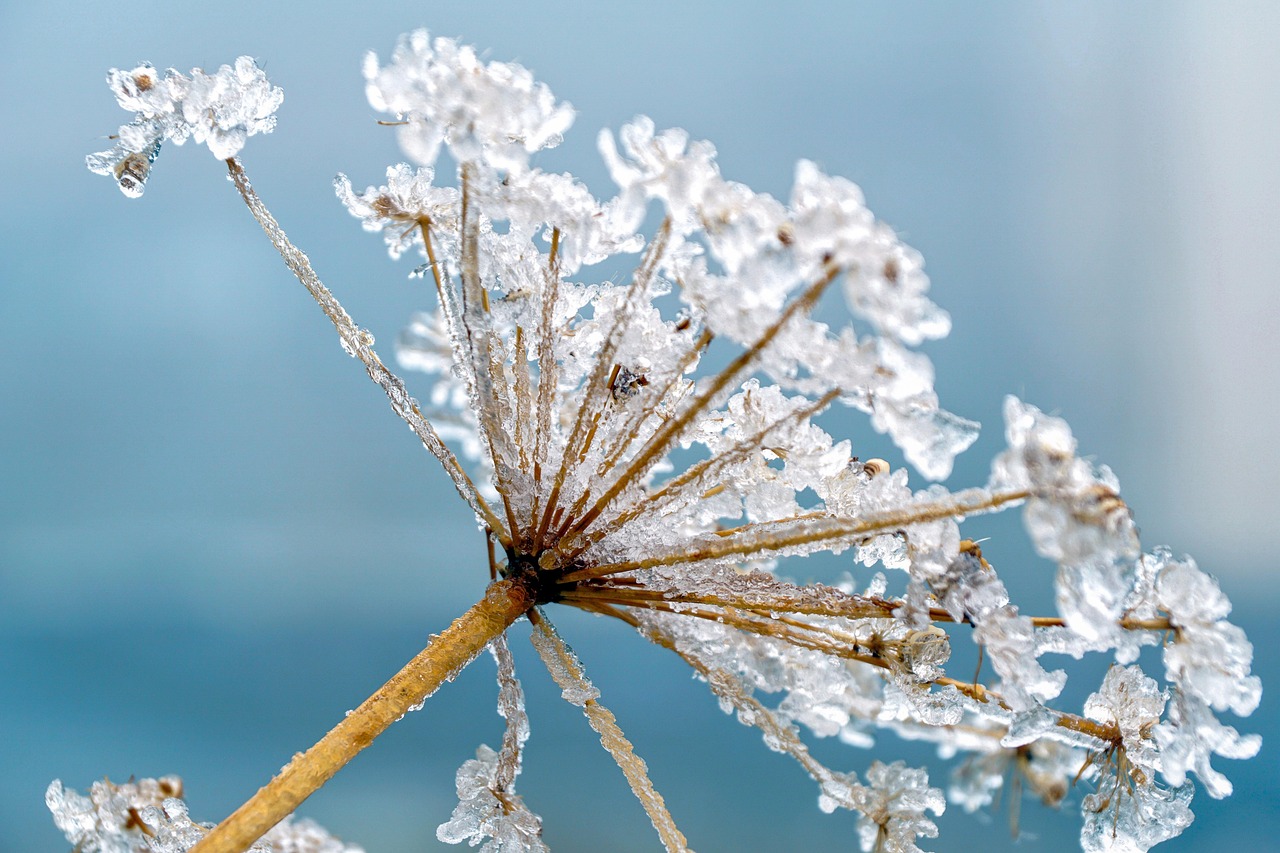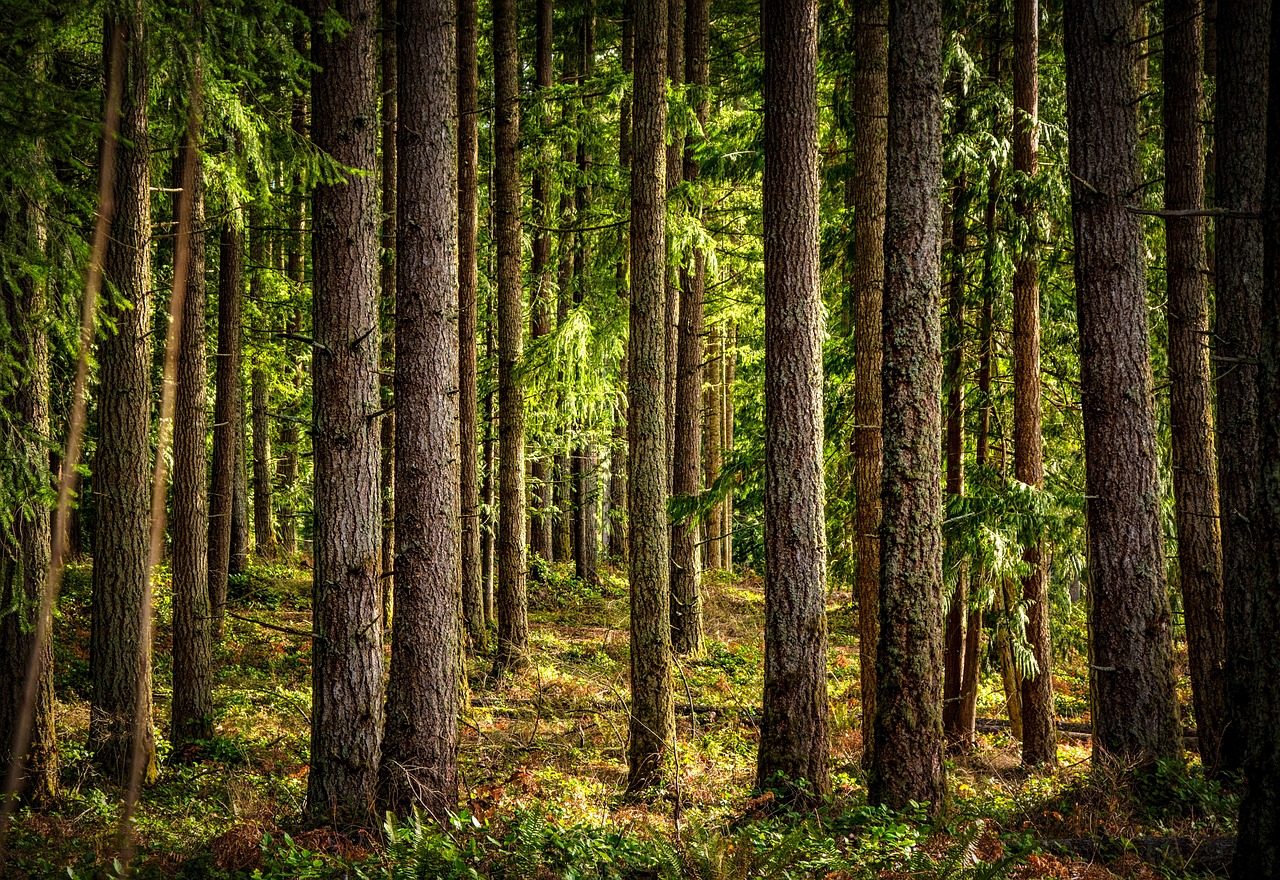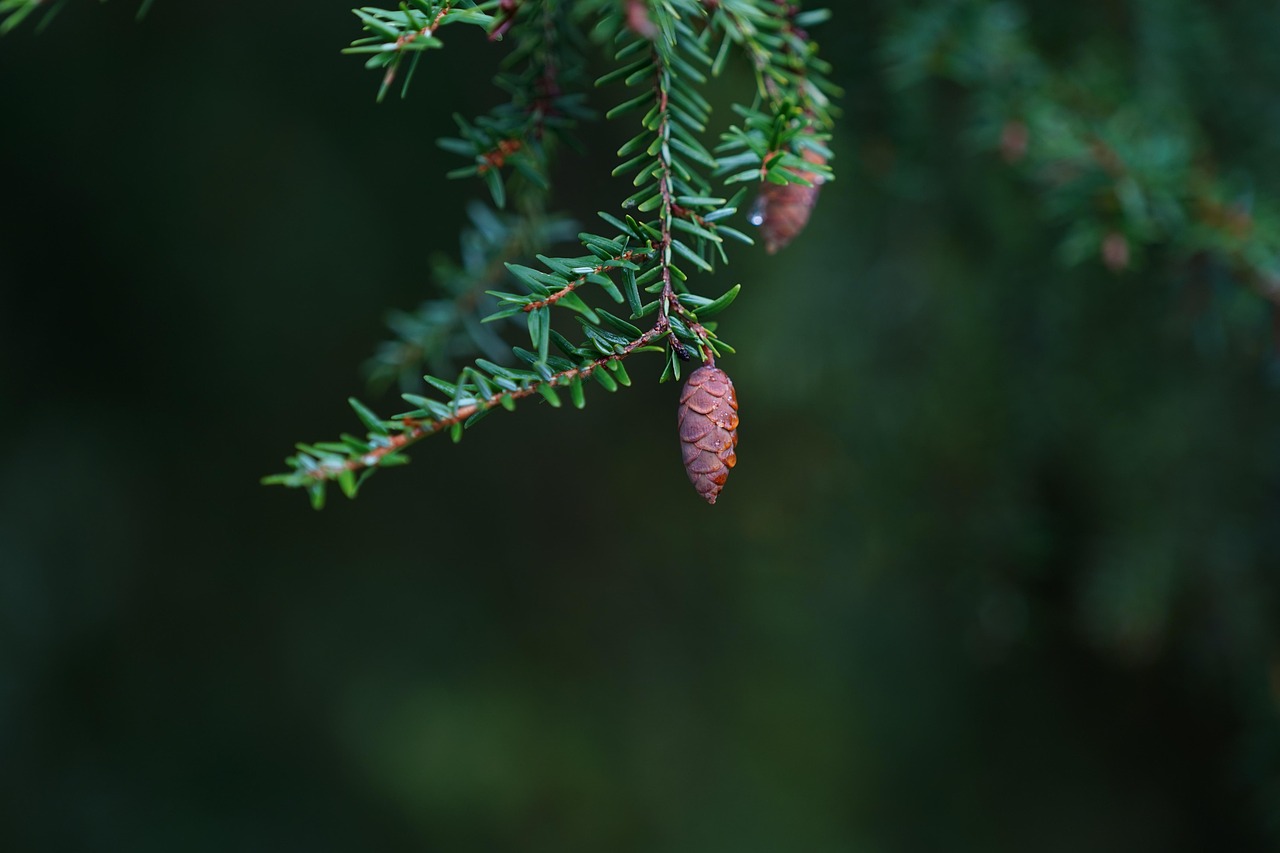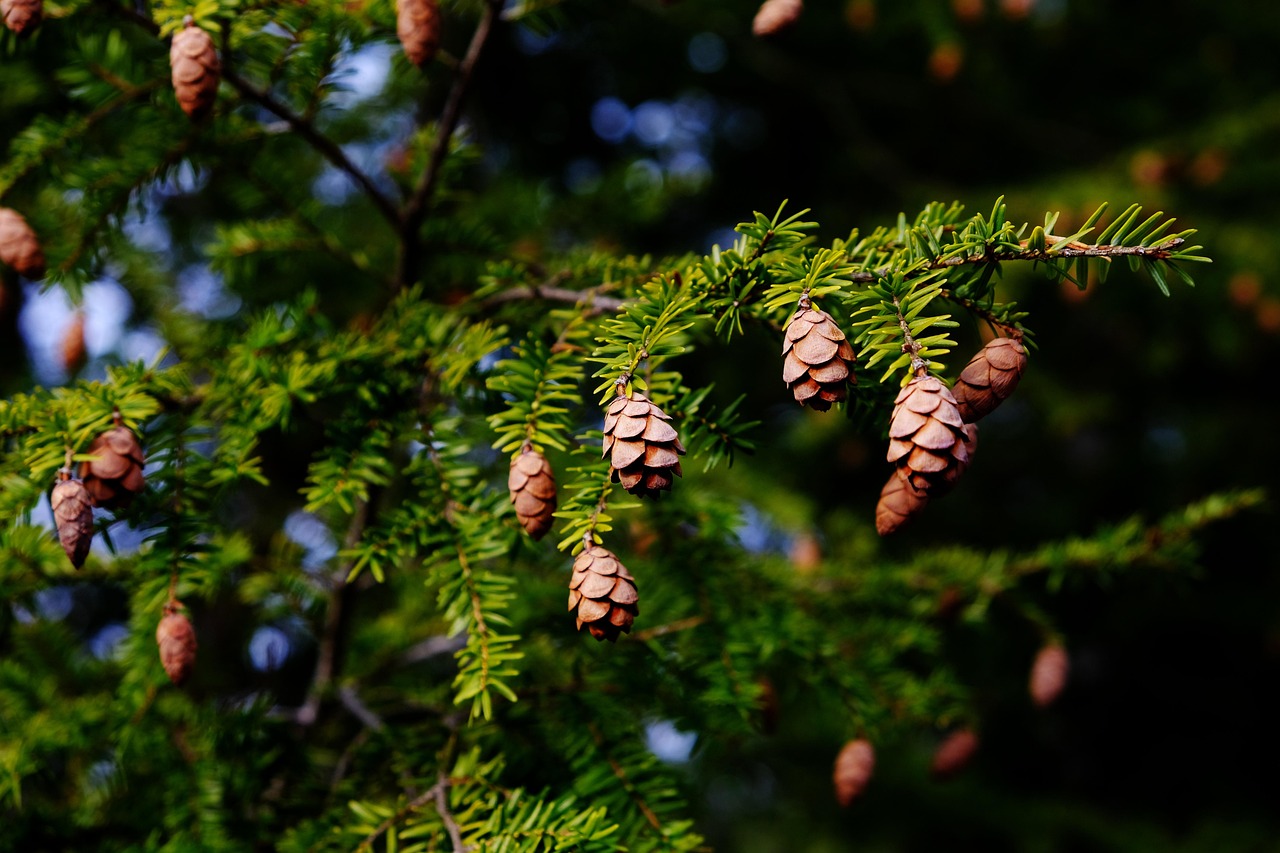Western Hemlock and Douglas Fir are two distinct species of coniferous trees native to the Pacific Northwest. Western Hemlock has drooping branches and flat, needle-like leaves, while Douglas Fir features a more conical shape with soft, flat needles and distinctive cones. These characteristics help in identifying each species.
Understanding Western Hemlock and Douglas Fir

Both Western Hemlock (Tsuga heterophylla) and Douglas Fir (Pseudotsuga menziesii) are significant trees in their native habitats. They are often found in mixed forests and play essential roles in their ecosystems. Understanding the differences between these two trees is crucial for forestry, landscaping, and ecological studies.
The Western Hemlock is primarily found in moist, shaded areas, thriving in the understory of coastal forests. It can grow up to 200 feet tall and has a slender trunk with a tapered top. Its bark is reddish-brown and becomes furrowed with age. The tree’s needles are typically 1 to 1.5 inches long and are arranged in a flat plane. One of the distinguishing features of the Western Hemlock is its drooping branches that create a graceful appearance.
In contrast, the Douglas Fir is known for its tall, straight trunk, which can reach heights of over 300 feet. Its bark is thick and deeply furrowed, providing protection against pests and harsh weather conditions. The needles of the Douglas Fir are soft, flat, and can be up to 3 inches long. They grow radially around the branch, giving the tree a bushy look. The cones are another identifying characteristic; they hang downwards and have distinctive three-pointed bracts.
| Characteristic | Western Hemlock | Douglas Fir |
|---|---|---|
| Height | Up to 200 feet | Over 300 feet |
| Needles | Flat, 1 to 1.5 inches long | Soft, flat, up to 3 inches long |
| Branches | Drooping branches | Straight, bushy appearance |
| Cones | Less distinctive | Hangs down with three-pointed bracts |
Both trees are valuable not only for their timber but also for their ecological contributions. Western Hemlock is often used for its fine-grained wood in construction and cabinetry. Meanwhile, Douglas Fir is prized for its strength and is widely used in building materials.
While they thrive in similar environments, their growth patterns and physical characteristics set them apart. Understanding these distinctions is essential for proper identification in natural and managed landscapes.
In addition to their physical traits, these trees have different ecological roles. Western Hemlock prefers moister conditions and often dominates in areas with heavy rainfall. Douglas Fir, on the other hand, is more adaptable and can grow in various soil types, making it a common choice for reforestation projects.
Habitat and Growth Conditions
The habitat preferences of Western Hemlock and Douglas Fir greatly influence their growth and distribution. Understanding these preferences can aid in identifying them in the wild and appreciating their ecological roles.
Western Hemlock thrives in cool, moist environments. It is commonly found in the understory of dense forests where light is filtered through the canopy above. These trees are particularly associated with regions that receive significant rainfall, typically in the coastal areas of the Pacific Northwest. The soil in these habitats is usually rich in organic matter, supporting the hemlock’s growth.
In contrast, Douglas Fir is more versatile in its habitat needs. It grows well in a range of conditions, from dry foothills to moist valleys. This adaptability allows it to populate various forest types, including mixed conifer forests and mountain ranges. The Douglas Fir prefers well-drained soils and can tolerate periods of drought better than Western Hemlock.
Growth Patterns
The growth patterns of these two species also differ significantly. Understanding these patterns can provide insight into their life cycles and ecological interactions.
- Western Hemlock:
- Typically grows at a slower rate compared to Douglas Fir.
- Can reach maturity around 200 years but may live longer under optimal conditions.
- Tends to grow tall and slender with a narrower crown.
- Douglas Fir:
- Known for its rapid growth rate, especially in its early years.
- Can live for more than 1,000 years in some cases, making it one of the longest-living conifers.
- Exhibits a broader crown and stronger branch structure.
Reproductive Features
Both Western Hemlock and Douglas Fir reproduce through seeds, but their reproductive features differ in terms of cone structure and seed dispersal mechanisms.
The cones of Western Hemlock are small, typically measuring 1 to 2 inches long. They hang down from the branches and are cylindrical in shape. When mature, these cones release seeds that are dispersed by wind, allowing them to establish in nearby areas where conditions are favorable.
Douglas Fir cones are larger, measuring 3 to 4 inches long, and have distinctive three-pointed bracts that protrude from between the scales. These cones also hang down but are more robust. The seeds are released when the cones dry out and open, often during late summer or early fall. This timing aligns with optimal conditions for seed germination in many environments.
Ecological Importance
Both species play vital roles in their ecosystems, contributing to biodiversity and providing essential habitat for various wildlife species. Their ecological importance extends beyond their timber value.
- Western Hemlock:
- Provides habitat for numerous birds and small mammals.
- The fallen needles create a thick layer of mulch on the forest floor, enriching the soil as they decompose.
- Helps maintain moisture levels in its environment, supporting other plant species.
- Douglas Fir:
- Supports large populations of birds, including woodpeckers and owls, which nest in its branches.
- The tree’s extensive root system helps prevent soil erosion on slopes.
- Its dense foliage provides shelter for many forest animals.
The contributions of both trees to their environments illustrate the importance of preserving these species. Their unique characteristics facilitate a variety of ecological interactions, ensuring a balanced ecosystem that supports both flora and fauna.

Commercial Uses and Economic Importance
Both Western Hemlock and Douglas Fir are highly valued in the timber industry, but they serve different purposes due to their unique properties. Understanding their commercial uses can provide insights into their economic significance.
Western Hemlock in Industry
Western Hemlock is often used for its lightweight and fine-grained wood. Its characteristics make it suitable for various applications:
- Construction: The wood is used in residential and commercial building projects, including framing and flooring.
- Cabinetry: Due to its attractive grain, Western Hemlock is popular for making cabinets, furniture, and millwork.
- Pulp and Paper: The wood fibers are also utilized in the production of paper products, contributing significantly to the pulp industry.
Overall, Western Hemlock’s versatility makes it a sought-after choice in various sectors. However, it is important to manage its harvesting sustainably to ensure the continued health of forests.
Douglas Fir: A Timber Giant
Douglas Fir is one of the most economically important trees in North America. Its strength and durability lead to several key uses:
- Structural Lumber: This tree is renowned for its high strength-to-weight ratio, making it ideal for beams, trusses, and other structural components.
- Exterior Products: Douglas Fir is often used for decking, siding, and fencing due to its resistance to decay when treated properly.
- Plywood and Engineered Wood: The wood is frequently employed in the production of plywood and other engineered wood products, which are widely used in construction.
The economic value of Douglas Fir extends beyond timber. Its fast growth rate makes it an attractive option for reforestation and biomass energy production as well.
Cultural Significance and Traditional Uses

Beyond their commercial applications, both Western Hemlock and Douglas Fir hold cultural significance for various indigenous peoples in the Pacific Northwest. These trees have been integral to the lives of local communities for centuries.
Western Hemlock in Cultural Practices
Western Hemlock has been traditionally used by indigenous tribes for various purposes:
- Medicinal Uses: The bark and needles have been used to create teas and poultices for medicinal remedies.
- Craft Materials: The flexible branches were often woven into baskets or used in the construction of traditional structures.
- Cultural Symbolism: The Western Hemlock is sometimes viewed as a symbol of resilience and strength, reflecting its ability to grow in challenging environments.
Douglas Fir in Indigenous Cultures
Douglas Fir also plays a vital role in the cultural practices of local tribes:
- Building Materials: The strong wood was used for constructing longhouses and canoes, essential for transportation and shelter.
- Ceremonial Uses: Parts of the tree are often used in rituals, reflecting a deep spiritual connection to nature.
- Food Source: The inner bark has historically been consumed as a food source during times of scarcity.
The reverence for these trees emphasizes the importance of maintaining healthy ecosystems, not only for their physical benefits but also for their cultural heritage.
Pest and Disease Resistance
Both species face threats from pests and diseases, but they exhibit different levels of resistance. Understanding these vulnerabilities can aid in forest management practices.
Pests Affecting Western Hemlock
Western Hemlock is susceptible to several pests:
- Hemlock Woolly Adelgid: This invasive insect can cause significant damage by feeding on the tree’s sap, leading to needle drop and eventual death if untreated.
- Root Rot: Fungal infections can compromise root systems, especially in poorly drained soils.
Pests Affecting Douglas Fir
Douglas Fir faces its own set of challenges:
- Bark Beetles: These insects can infest weakened trees, leading to widespread mortality during drought periods.
- Fusiform Rust: This fungal disease affects the growth and health of Douglas Fir, particularly in younger trees.
Both species require careful monitoring and management practices to mitigate these risks effectively. Awareness of these threats can lead to better conservation efforts and sustainable forestry practices.
Conservation and Management Practices

As both Western Hemlock and Douglas Fir are essential components of their ecosystems, conservation efforts are vital to ensure their survival. Sustainable management practices play a critical role in maintaining healthy populations of these trees.
Foresters and conservationists employ various strategies to promote the health of these species. These practices include:
- Selective Logging: Instead of clear-cutting, selective logging allows for the harvesting of mature trees while preserving younger ones. This method can help maintain genetic diversity and support ecosystem stability.
- Restoration Projects: Reforestation and replanting efforts focus on restoring native species, including both Western Hemlock and Douglas Fir, to areas where they have been depleted.
- Pest Management: Integrated pest management strategies help control pest populations without harming the trees. Monitoring for signs of infestations allows for timely interventions.
- Educational Programs: Engaging local communities in conservation efforts raises awareness about the importance of these species and encourages responsible land use practices.
In addition to these practices, ongoing research into the effects of climate change on these species is essential. Understanding how shifting weather patterns might impact growth, reproduction, and pest susceptibility will inform future management strategies.
Final Thoughts
The identification and understanding of Western Hemlock and Douglas Fir highlight the diversity within forest ecosystems. Each species has unique characteristics that contribute to its ecological role, economic value, and cultural significance. Recognizing their differences not only aids in proper identification but also emphasizes their importance in maintaining biodiversity.
Both trees face challenges from pests, diseases, and environmental changes. Awareness of these threats is crucial for effective management and conservation efforts. By implementing sustainable forestry practices, we can ensure that both Western Hemlock and Douglas Fir continue to thrive in their natural habitats.
Ultimately, the preservation of these iconic trees reflects a broader commitment to environmental stewardship. Protecting the forests where they grow benefits not only the trees themselves but also the countless species that depend on them, including human communities that rely on the resources they provide.
In conclusion, understanding the nuances of Western Hemlock and Douglas Fir enriches our appreciation of the natural world. By fostering a deeper connection to these trees, we can advocate for their protection and promote a sustainable future for our forests.
